Low Impact Development for Businesses
Low Impact Development (LID) is a method of development that seeks to maintain the natural hydrologic character of an area. LID provides a more sustainable and pollution-preventative approach to water management. Water quality regulations for Orange County require implementation of LID in larger new developments and encourage LID and other sustainable practices in existing areas. Using these LID tips for businesses, you will decrease polluted runoff and local flooding, increase water infiltration, and reduce your business’s water bill.
Lid Techniques For Businesses
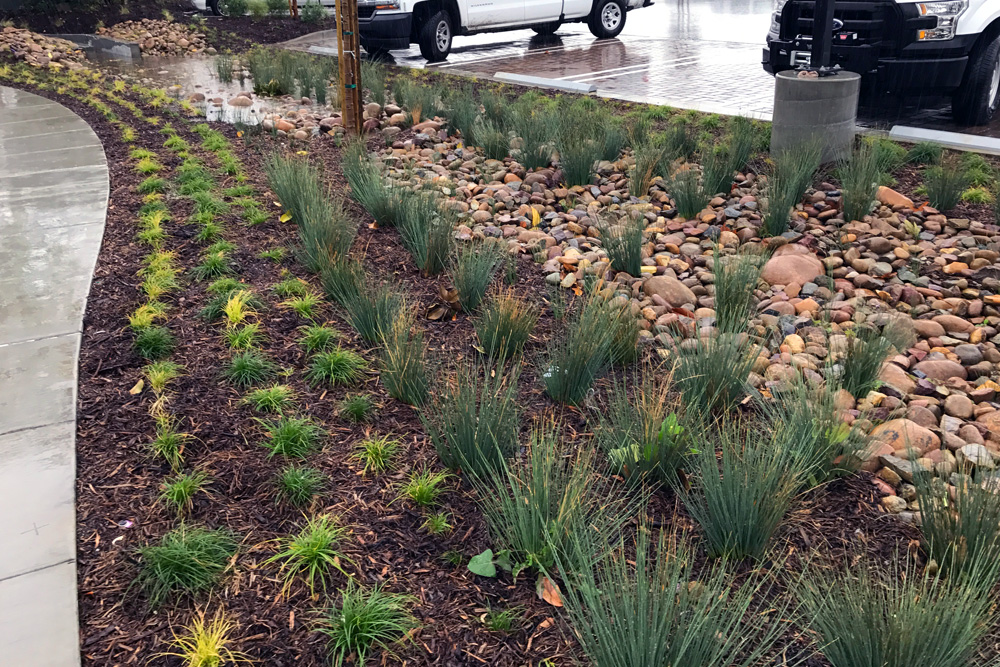
Bioretention
Bioretention areas function as soil and plant-based filtration devices that remove pollutants from runoff through a variety of physical, biological, and chemical treatment processes. Bioretention cells can achieve quality runoff control by infiltrating and temporarily storing runoff. They function as dynamic, living micro-ecological systems that demonstrate many benefits such as:
- Create attractive landscaping
- Provide natural habitat for birds and butterflies
- Increase soil moisture
- Increase evapotranspiration
- Create a comfortable local climate
- Reduce on-site erosion
- Reduce flow energy
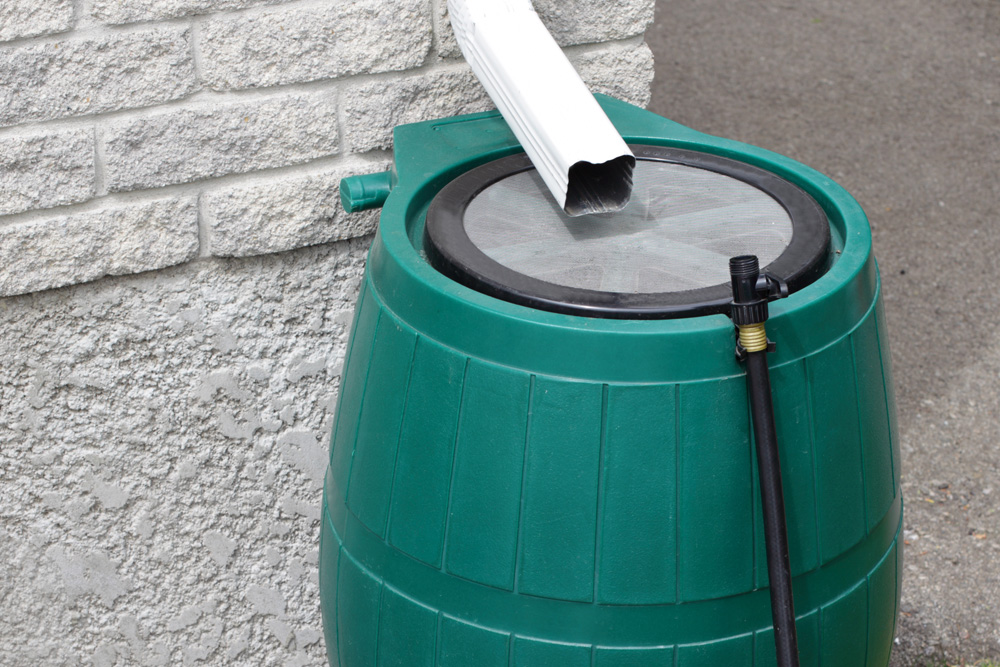
Rain Barrels
Rain barrels are an inexpensive way to easily maintain water retention that can be used in commercial or residential settings. Rain barrels are typically small devices that contain a downspout, sealed lid, and an overflow pipe.
Prevent mosquito growth in and around rain barrels by ensuring all entry points are tightly sealed.

Cisterns
Cisterns are roof water management devices that retain runoff in above or underground storage tanks. They hold more water by volume than rain barrels with some underground cisterns having the capacity for 10,000 gallons of runoff. On-site cistern use with redistribution helps conserve water and can reduce water utility costs.
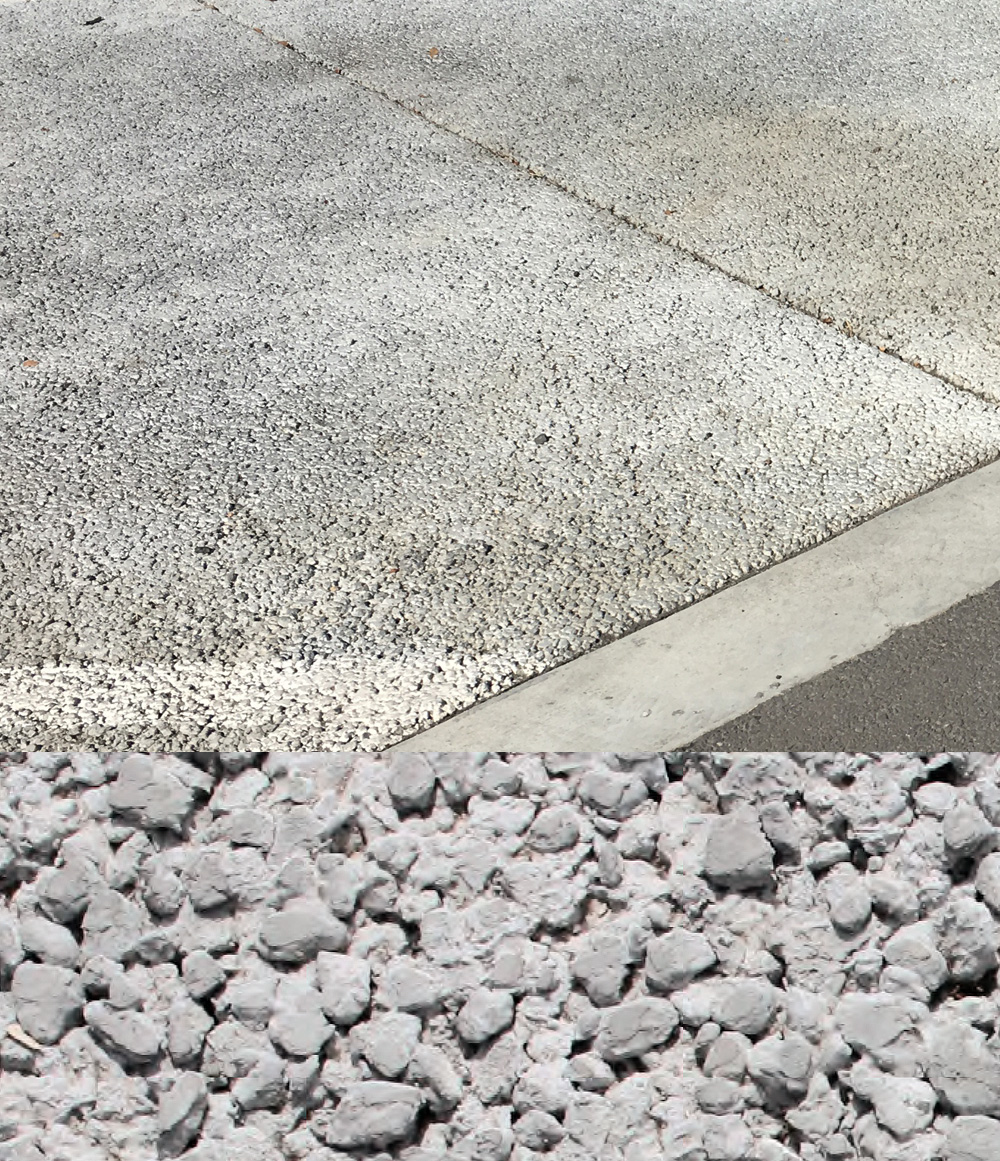

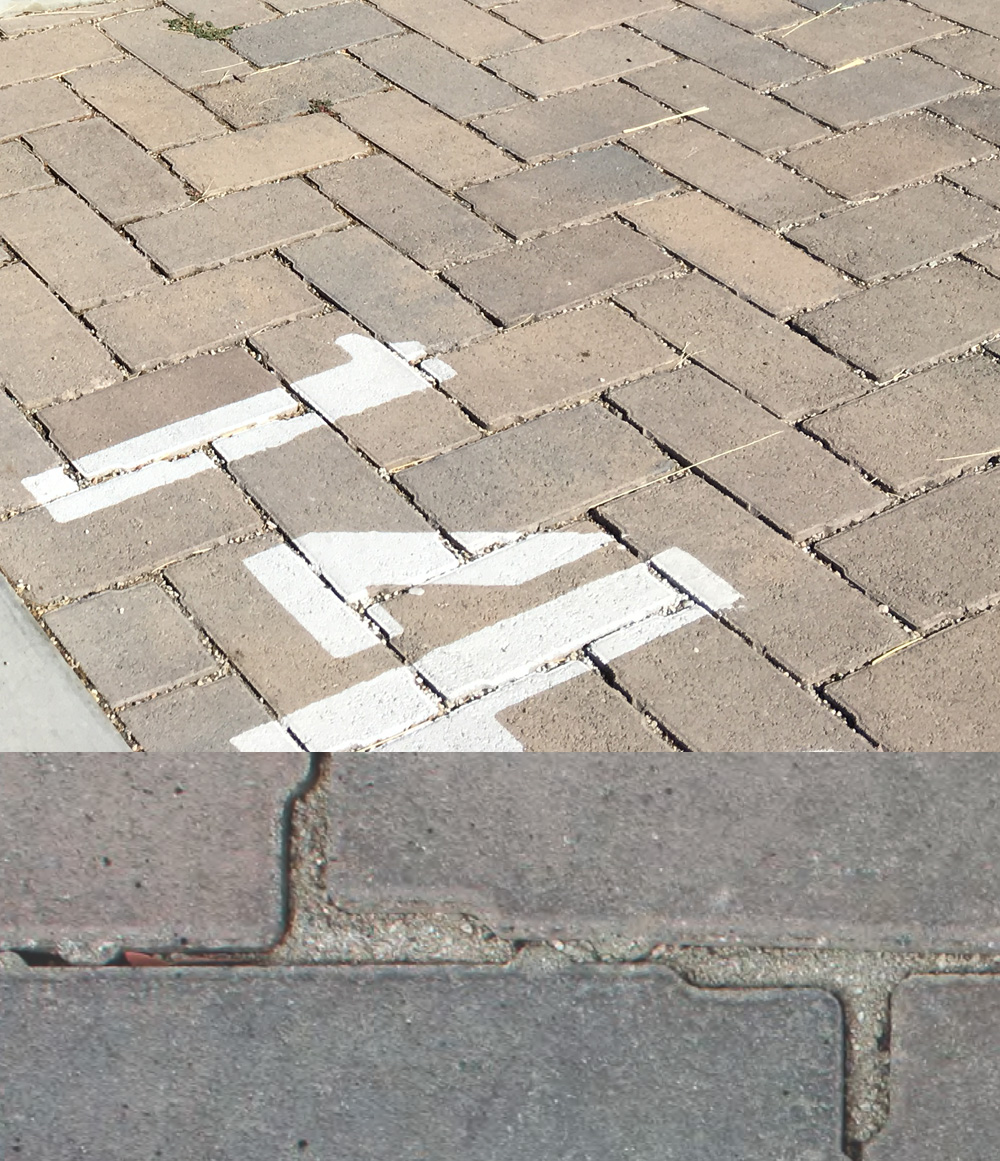
Permeable Surfaces
Paving materials and design benefits include:
- Eliminate local flooding
- Help groundwater recharge
- Control erosion
- Facilitate pollutant removal

Soil Amendments
Soil amendments composed of green waste top soil, lime, and gypsum can help provide added nutrients to a landscape. These additives can reduce polluted runoff by helping minimize development impacts on native soils and restoring their infiltration capacity. A large business landscape would benefit from a soil analysis prior to compost amending.
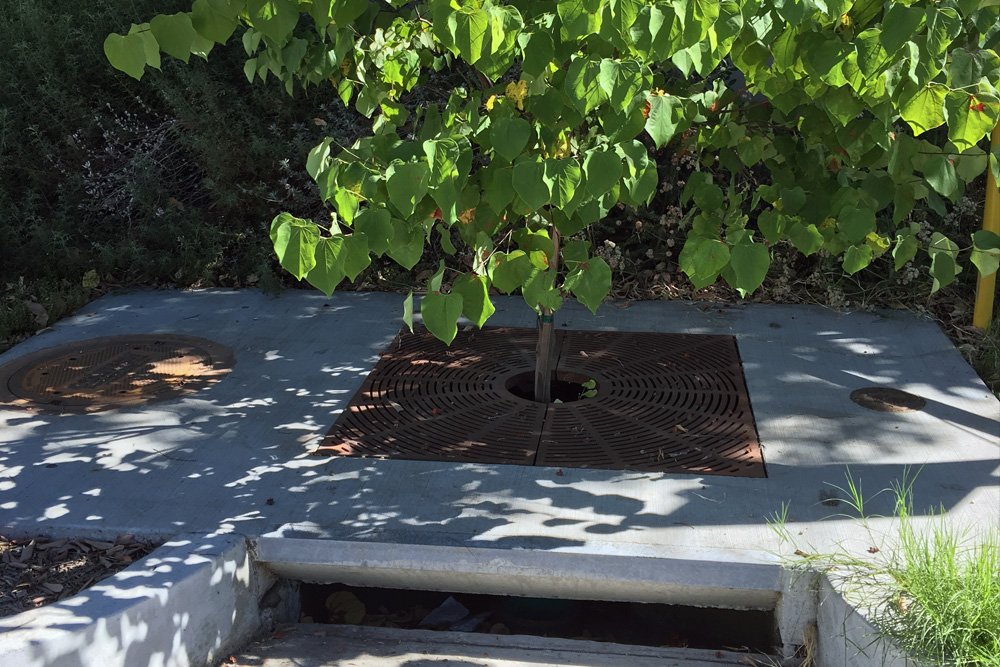
Tree Box Filters
Tree box filters are mini bioretention cells that live beneath trees. These are very effective at collecting polluted runoff that is then filtered by local vegetation and entered into a catch basin to be distributed throughout the area.
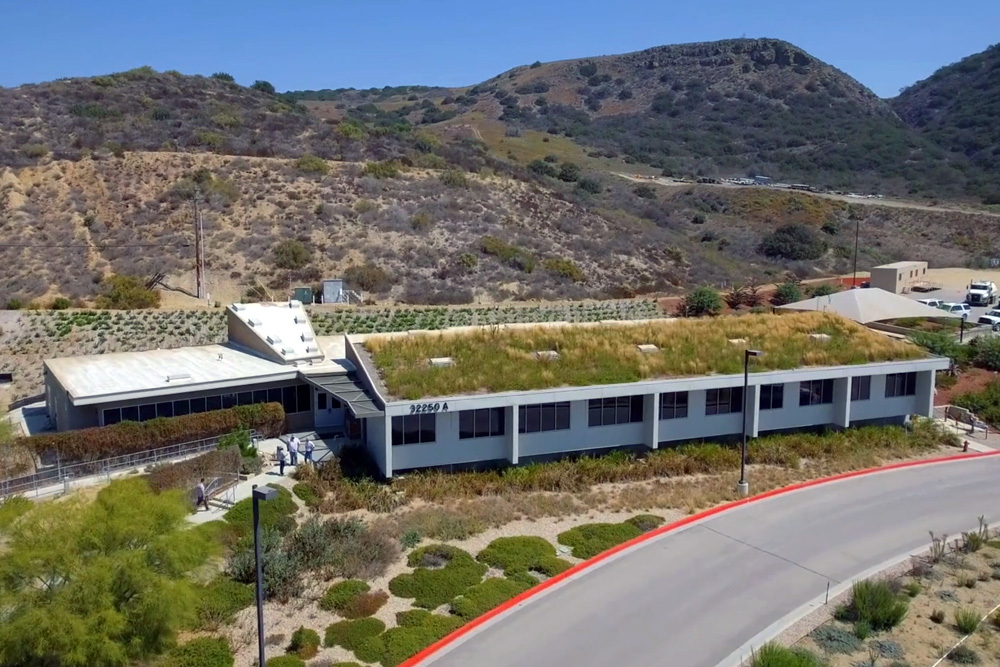
Green Roofs
Green roofs help reduce harmful effects to water quality by filtering, absorbing, or detaining rainfall through vegetated roof covers. They are comprised of a lightweight soil on top of a drainage layer and impermeable membrane which helps to protect the building. Green roofs can use native plants that are adapted to the Orange County climate, reducing the need for additional irrigation. Green roof benefits include:
- Use of natural remedies to prevent polluted runoff
- Reduce runoff and discharge
- Reduce the building air conditioning bill
More Information
For more information about how to reduce polluted runoff at your business, check out resources for Pollution Prevention for Businesses. Additionally, H2OC is providing landscape improvement rebates to residents via our RainSmart Rebates Pilot Program. Click here for more information.
One example of LID implementation can be found at the OC Public Works Glassell Campus in Orange, CA. The Glassell Campus underwent a large-scale LID retrofit in 2016. To learn more about the LID retrofits involved or to request a tour, click here.